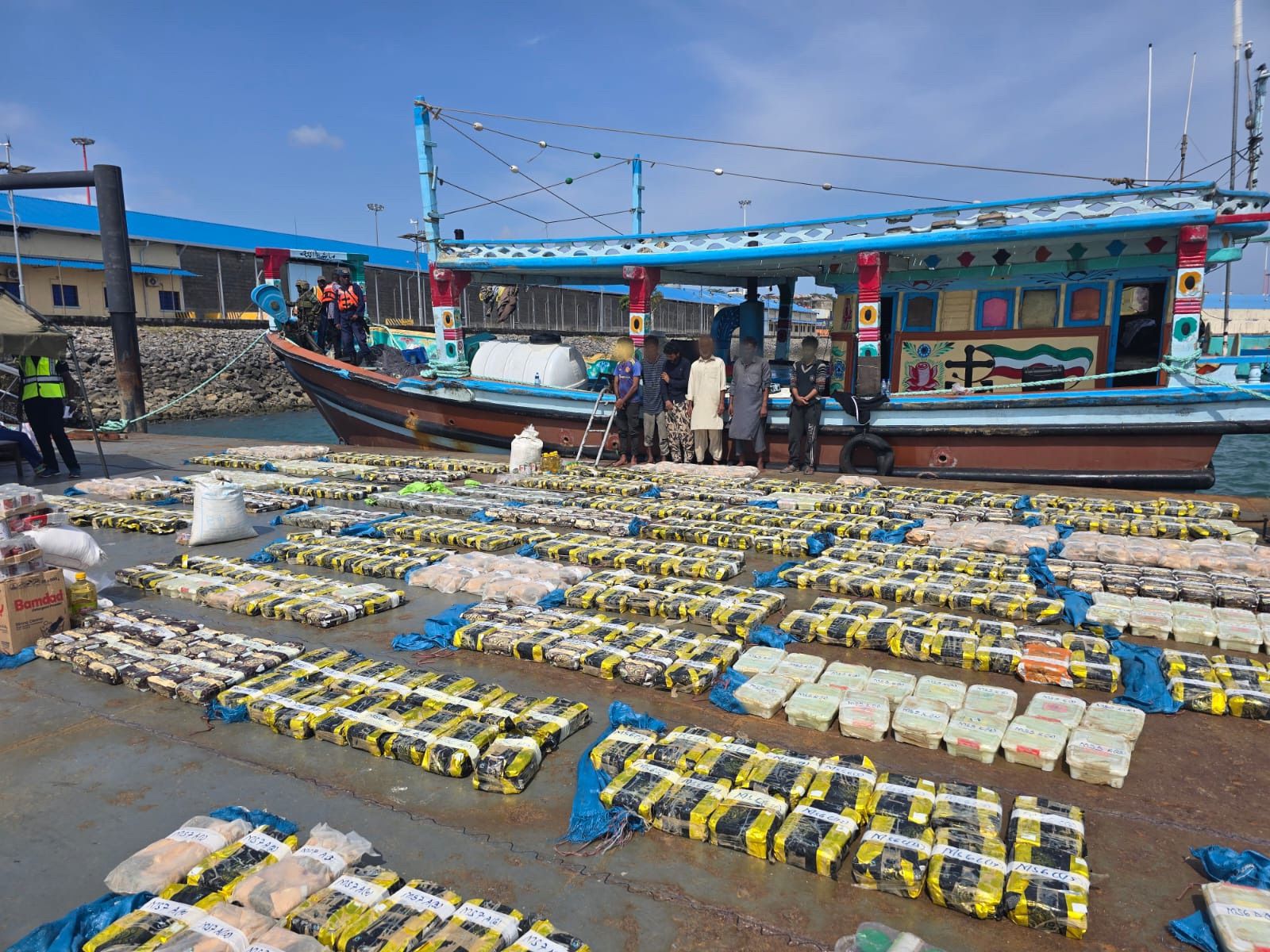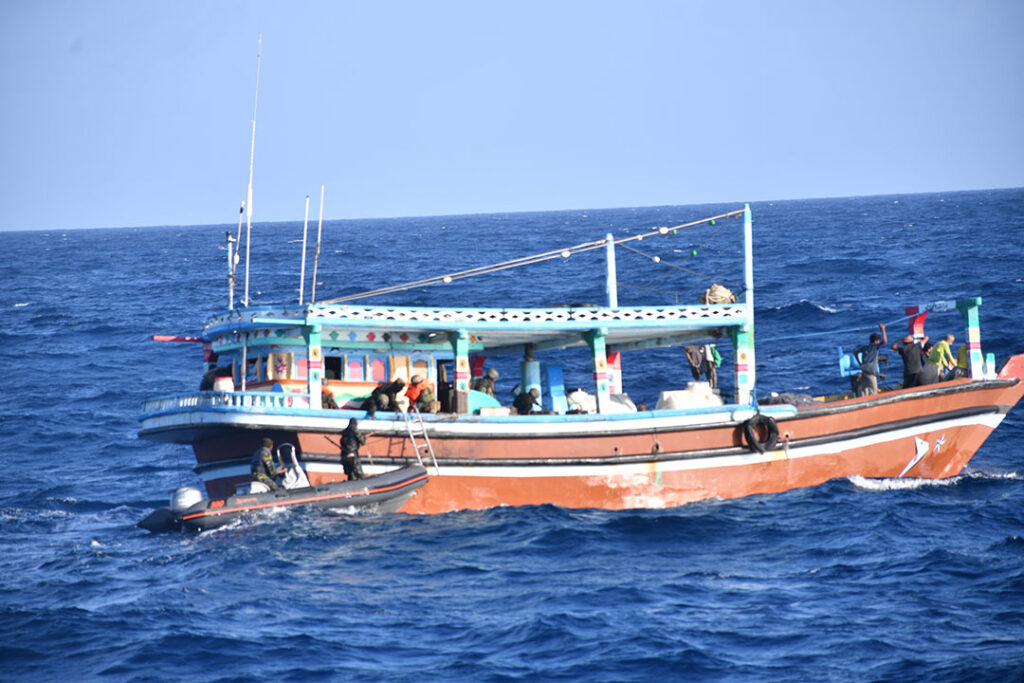The target was a small, flagless motor vessel called the Mashallah that had been under the watch of international drug enforcement agencies. It had repeatedly evaded prior attempts at interception in the western Indian Ocean.
On October 23, about 630 kilometers off the coast of Mombasa, 15 Kenyan Marine commandos launched in small boats from Navy patrol ship Shupavu and successfully carried out a visit, board, search and seizure operation. Two days later, after escorting the Mashallah to Mombasa port under armed guard, authorities unloaded 769 packets of methamphetamine totaling 1,024 kilograms, valued at $63 million.
“This is a big success for the Kenyan security teams,” Kenya Navy Deputy Commander Brig. Sankale Kiswa said to media on October 25. “This has come about with the cooperation of other regional partners who provided very valuable information on the movement of this suspicious vessel.”
Operation Bahari Safi, which means clean seas in Swahili, netted the second-largest narcotics seizure in Kenya’s history. All parties hailed it as a triumph of collaboration between multiple security agencies, regional bodies and international partners.

It began with the National Police Service receiving a tip about a suspicious vessel navigating Kenyan waters. It evolved into a joint operation by the Kenya Navy, Coast Guard, the Directorate of Criminal Investigations (DCI), the Anti-Narcotics Unit and the National Authority for the Campaign Against Alcohol and Drug Abuse.
Interpol and the U.S. Naval Criminal Investigative Service provided and coordinated operational support with the Kenya Maritime Operations Center, which also worked with two regional maritime agencies: the Regional Coordination Operations Center based in Seychelles and the Regional Maritime Information Fusion Center based in Madagascar.
“We remain steadfast in our commitment to strengthen inter-agency cooperation, enhance maritime and border security and reinforce partnerships with regional and global allies to combat the production, movement and financing of illicit substances,” Interior Cabinet Secretary Kipchumba Murkomen said.
The 15 Marine commandos were part of the Kenya Navy Special Operations Squadron’s Special Boat Unit (SBU), that used U.S.-provided boats and has worked extensively with U.S. Marines on sea interdiction and ship boarding, among other maritime security tasks.
Kenya is emerging as a key transit hub for global drug traffickers moving cocaine, heroin and methamphetamine throughout Eastern and Southern Africa. A dangerous synthetic stimulant that is increasingly available, meth is becoming the biggest drug threat in the region, according to a June report by the Eastern and Southern Africa Commission on Drugs.
Forensic analysis by Kenya’s government chemist said the seized methamphetamine had a purity level of 98%. Police arrested six Iranian nationals on drug trafficking charges.
DCI Director Mohamed Amin said Kenya’s Anti-Narcotics Unit is investigating the origin and destination of the drugs.
“Certainly, it was destined somewhere in this region,” he told media at Mombasa port on October 25. He said Kenya is facing a growing synthetic drug crisis, particularly along the coastline, where hundreds of people struggle with addiction to meth and heroin.
“This is a huge success in our fight against drug trafficking and other forms of organized crime in the region and across the continent,” Amin said. “The operation demonstrates the commitment of our law enforcement agencies to combating narcotics and ensuring national security. It also demonstrates the commitment of our Kenya Navy team in ensuring our maritime security.”

